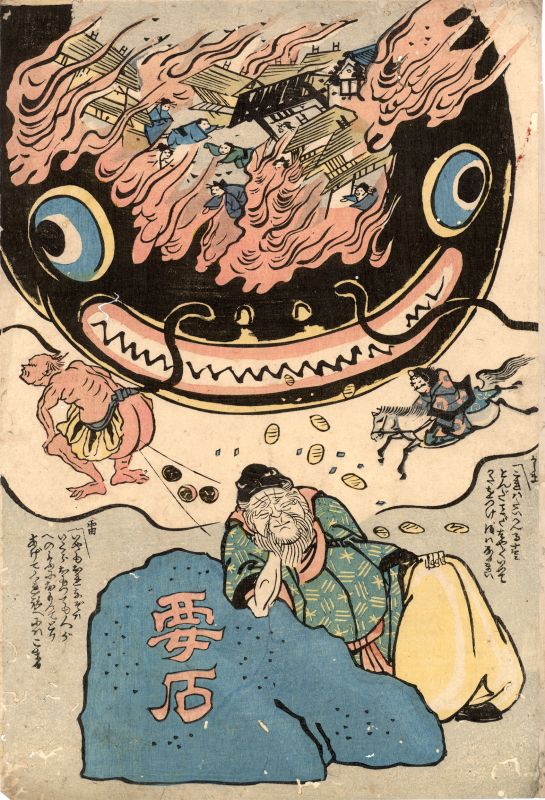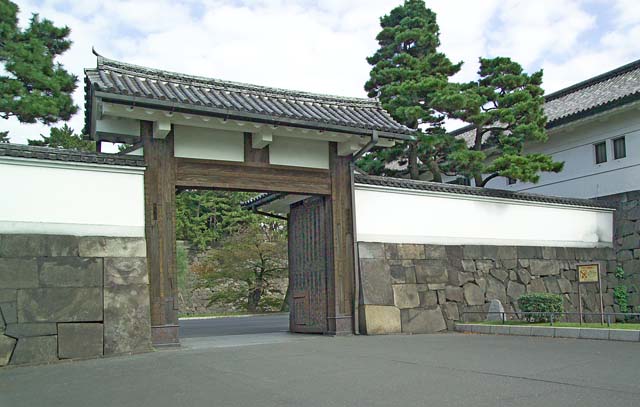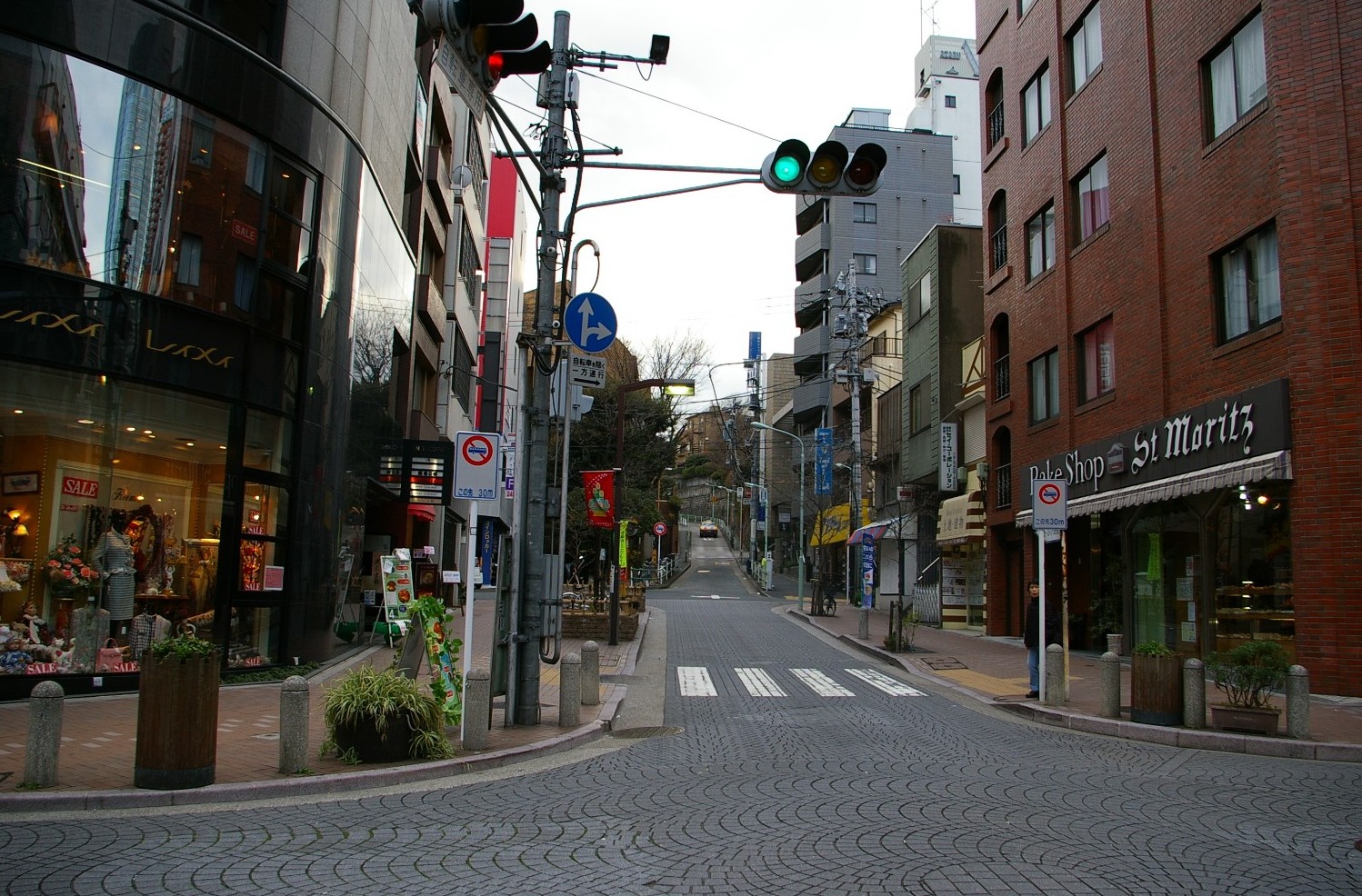|
Hidamari No Ki
is a Japanese manga series written and illustrated by Osamu Tezuka about a friendship between a samurai and a doctor in the final days of the Tokugawa Shogunate. ''Hidamari no Ki'' received the Shogakukan Manga Award in 1984 for general manga. The story is partly based on Tezuka's great-grandfather who was one of the Japanese physicians pushing for acceptance of Western medical practice at the time. The title is a metaphor for the Tokugawa shogunate which is compared to an old camphor tree which has enjoyed the sunshine and shelter from the winds for 300 years, but is slowly dying because it is being eaten away from the inside by termites and gribbles. It has been adapted into an anime series, by Madhouse and premiered in Japan on NTV on April 4, 2000. It also was adapted into a television drama, and also a 2021 stage play starring Sugeta Rinne of the boyband 7 MEN Samurai. Plot The story follows two young men whose lives intersect during the political turbulence and soci ... [...More Info...] [...Related Items...] OR: [Wikipedia] [Google] [Baidu] |
Osamu Tezuka
Osamu Tezuka (, born , ''Tezuka Osamu''; – 9 February 1989) was a Japanese manga artist, cartoonist, and animator. Born in Osaka Prefecture, his prolific output, pioneering techniques, and innovative redefinitions of genres earned him such titles as , and . Additionally, he is often considered the Japanese equivalent to Walt Disney, who served as a major inspiration during Tezuka's formative years. Though this phrase praises the quality of his early manga works for children and animations, it also blurs the significant influence of his later, more literary, gekiga works. Tezuka began what was known as the manga revolution in Japan with his '' New Treasure Island'' published in 1947. His output would spawn some of the most influential, successful, and well-received manga series including the children mangas ''Astro Boy'', '' Princess Knight'' and ''Kimba the White Lion'', and the adult-oriented series '' Black Jack'', ''Phoenix'', and ''Buddha'', all of which won several aw ... [...More Info...] [...Related Items...] OR: [Wikipedia] [Google] [Baidu] |
Termite
Termites are small insects that live in colonies and have distinct castes (eusocial) and feed on wood or other dead plant matter. Termites comprise the infraorder Isoptera, or alternatively the epifamily Termitoidae, within the order Blattodea (along with cockroaches). Termites were once classified in a separate order from cockroaches, but recent phylogenetic studies indicate that they evolved from cockroaches, as they are deeply nested within the group, and the sister group to wood eating cockroaches of the genus ''Cryptocercus''. Previous estimates suggested the divergence took place during the Jurassic or Triassic. More recent estimates suggest that they have an origin during the Late Jurassic, with the first fossil records in the Early Cretaceous. About 3,106 species are currently described, with a few hundred more left to be described. Although these insects are often called "white ants", they are not ants, and are not closely related to ants. Like ants and some bees a ... [...More Info...] [...Related Items...] OR: [Wikipedia] [Google] [Baidu] |
Tankōbon
is the Japanese Japanese may refer to: * Something from or related to Japan, an island country in East Asia * Japanese language, spoken mainly in Japan * Japanese people, the ethnic group that identifies with Japan through ancestry or culture ** Japanese diaspor ... term for a book that is not part of an anthology or corpus. In modern Japanese, the term is most often used in reference to individual volumes of a manga series: most series first appear as individual chapters in a weekly or monthly List of manga magazines, manga anthology with other works before being published as volumes containing several chapters each. Major publishing Imprint (trade name), imprints for include Jump Comics (for serials in Shueisha's ''Weekly Shōnen Jump'' and other Jump (magazine line), ''Jump'' magazines), Kodansha's Weekly Shōnen Magazine, Shōnen Magazine Comics, and Shogakukan's Shōnen Sunday Comics. Japanese comics (manga) manga came to be published in thick, phone book, phone- ... [...More Info...] [...Related Items...] OR: [Wikipedia] [Google] [Baidu] |
1855 Edo Earthquake
The , was the third Ansei Great Earthquake, which occurred during the late-Edo period. It occurred after the 1854 Nankai earthquake, which took place about a year prior. The earthquake occurred at 22:00 local time on 11 November. It had an epicenter close to Edo (now Tokyo), causing considerable damage in the Kantō region from the shaking and subsequent fires, with a death toll of 7,000–10,000 people and destroyed around 14,000 buildings. The earthquake had a magnitude of 7.0 on the surface wave magnitude scale and reached a maximum intensity of XI (''Extreme'') on the Mercalli intensity scale. The earthquake triggered a minor tsunami. Tectonic setting The Kanto area lies above a complex part of the convergent boundaries between the subducting Pacific and Philippine Sea Plates and the overriding Eurasian and North American Plates. Earthquakes with epicenters in the Kantō region may occur within the Eurasian Plate, at the Eurasian Plate/Philippine Sea Plate interface, with ... [...More Info...] [...Related Items...] OR: [Wikipedia] [Google] [Baidu] |
Hokushin Ittō-ryū
Hokushin Ittō-ryū Hyōhō (北辰一刀流兵法) is a koryū (古流) that was founded in the late Edo period (1820s) by Chiba Shusaku Narimasa (千葉周作成政, 1794–1856). He was one of the last masters who was called a Kensei (sword saint). Curriculum and Characteristics The curriculum of the ryūha contains mainly kenjutsu, iaijutsu and naginatajutsu, but the main weapons used are the long and short swords (katana and wakizashi). Hokushin Ittō-ryū is a very intense duelling style which focuses on simple and fast techniques where no unnecessary movements are made. Controlling the enemy's centre line with the kiri-otoshi and dominating him with extremely fast tsuki-waza are the signature techniques of this ryūha. The principles of this style are that a perfect technique should contain defence and offence in one action. Characteristic of the training is the use of onigote (heavily padded gloves) like in its ancestor styles Ono-ha Ittō-ryū and Nakanishi-ha Itt ... [...More Info...] [...Related Items...] OR: [Wikipedia] [Google] [Baidu] |
Mitsuru Miyamoto
is a Japanese actor, voice actor and narrator from Tokyo. He is attached to Theatre Company Subaru. He is best known for Keiichi Nakagawa from ''Kochira Katsushika-ku Kameari Kōen-mae Hashutsujo'', Roger Smith from ''The Big O'', Ougai Mori from '' Bungo Stray Dogs'', Gaku Yashiro from '' Erased'', Steven A. Starphase from ''Blood Blockade Battlefront'' and Maiza Avaro from ''Baccano!'', as well as the Japanese voice of adult Simba from ''The Lion King''. In the live action field, Miyamoto is the famous dubbing over artist of Ethan Hawke, Adrien Brody, Matthew Modine, Gil Bellows and Guy Pearce. He was also the first dub-over artist of Keanu Reeves and Brad Pitt in their early days. Filmography Television animation ;1990s *''YuYu Hakusho'' (1993) (Akarenja) *'' H2'' (1995) (Hideo Tachibana) *''Baby and Me'' (1996) ( Harumi Enoki) *''Kochira Katsushika-ku Kameari Kōen-mae Hashutsujo'' (1996) (Keiichi Nakagawa) *''Kinda'ichi Case Files'' (1997) (Takuya Ogi) *''Fancy Lala'' (19 ... [...More Info...] [...Related Items...] OR: [Wikipedia] [Google] [Baidu] |
Osaka
is a designated city in the Kansai region of Honshu in Japan. It is the capital of and most populous city in Osaka Prefecture, and the third most populous city in Japan, following Special wards of Tokyo and Yokohama. With a population of 2.7 million in the 2020 census, it is also the largest component of the Keihanshin Metropolitan Area, which is the second-largest metropolitan area in Japan and the 10th largest urban area in the world with more than 19 million inhabitants. Osaka was traditionally considered Japan's economic hub. By the Kofun period (300–538) it had developed into an important regional port, and in the 7th and 8th centuries, it served briefly as the imperial capital. Osaka continued to flourish during the Edo period (1603–1867) and became known as a center of Japanese culture. Following the Meiji Restoration, Osaka greatly expanded in size and underwent rapid industrialization. In 1889, Osaka was officially established as a municipality. The construc ... [...More Info...] [...Related Items...] OR: [Wikipedia] [Google] [Baidu] |
Ansei
was a after ''Kaei'' and before ''Man'en''. This period spanned the years from November 1854 through March 1860. The reigning emperor was . Change of era * November 27, 1854 (): The new era name of ''Ansei'' (meaning "tranquil government") was created to herald the beginning of a peaceful period. The impetus and explanation for this change of era names was said to have been the burning of the Palace in Kyoto in the preceding summer.Satow, Ernest Mason. (1905) ''Japan 1853–1864, Or, Genji Yume Monogatari'', p. 11./ref> The new era name was derived from an hortatory aphorism: "Rule peacefully over the masses, then the ruler will remain in his place" (庶民安政、然後君子安位矣). Although the notion seems appealing, the arrival of the Black Ships and Commodore Matthew C. Perry is not specifically recognized as a factor in the change of era names. Events of the ''Ansei'' era * 1854 (''Ansei 1''): The Ansei-Tōkai Quake (安政東海地震, ''Ansei Tōkai Jish ... [...More Info...] [...Related Items...] OR: [Wikipedia] [Google] [Baidu] |
Azabu
is an area in Minato,Tokyo, Japan. Built on a marshy area of foothills south of central Tokyo, its coverage roughly corresponds to that of the former Azabu Ward, presently consisting of nine official districts: Azabu-Jūban, Azabudai, Azabu-Nagasakachō, Azabu-Mamianachō, Nishi-Azabu, Higashi-Azabu, Moto-Azabu and Roppongi. It is known as one of Tokyo's most expensive and upscale residential districts with many artists, business people, and celebrities residing there. It is also known for its large foreign population, due in part to a number of foreign embassies present in the area. History The name Azabu literally means hemp cloth. Until the early Edo period, the area was agricultural. Archaeological evidence indicates that the area was inhabited as far back as the Jōmon period. The Juban Inari shrine (formerly known as Takechiyo Inari) was constructed in AD 712, the temple of Zenpuku-ji in 824, and the Hikawa Shrine in 939 (on orders of Minamoto no Tsunemoto). Th ... [...More Info...] [...Related Items...] OR: [Wikipedia] [Google] [Baidu] |
Koichi Yamadera
is a Japanese actor, voice actor, narrator and singer from Shiogama, Miyagi Prefecture. He graduated from Tohoku Gakuin University's economics school and is currently affiliated with Across Entertainment. Before that, he was affiliated with the Tokyo Actor's Consumer's Cooperative Society. He is known for his roles in '' Cowboy Bebop'' (as Spike Spiegel), the ''Yakuza'' videogame series (as Shun Akiyama), '' Shōwa Genroku Rakugo Shinjū'' (as Sukeroku), ''Ghost in the Shell'' (as Togusa), ''Neon Genesis Evangelion'' (as Ryoji Kaji), ''Gintama'' (as Utsuro), ''Ninja Scroll'' (as Jūbei Kibagami), ''Dragon Ball Super'' (as Beerus), ''Anpanman'' (as Cheese), ''Ranma ½'' (as Ryōga Hibiki/P-chan and the Jusenkyō Guide), ''Space Battleship Yamato 2199'' (as Aberdt Desler) and the second generation voice of Koichi Zenigata (''Lupin III''). [...More Info...] [...Related Items...] OR: [Wikipedia] [Google] [Baidu] |
7 MEN Samurai
is a Japanese boy band produced by Johnnys' Island Company, a division of Tokyo-based talent agency Johnny & Associates. They were created on February 26, 2018, by Johnny Kitagawa, and named after Akira Kurosawa's 1954 film '' Seven Samurai''. They are known for their dance acumen, band-style performances, and rock covers/remixes of J-Pop songs from the older Johnnys' talent catalog, including ''Cinderella Girl'' (original artist: King & Prince), and ''SAMURAI'' (original artist: Takky & Tsubasa). In addition to appearing regularly as a group in the bi-monthly music and variety show '' The Shonen Club'' (NHK), they are one of eight groups featured on the official Johnnys' Junior YouTube Channel, and have posted content every Friday since August 2019. They are also active on the Johnnys' official video site ''Island TV'', where they share vlog-style behind-the-scenes recaps of work and engagements, as well as humorous vignettes, outtakes and original skits. Various members are al ... [...More Info...] [...Related Items...] OR: [Wikipedia] [Google] [Baidu] |






